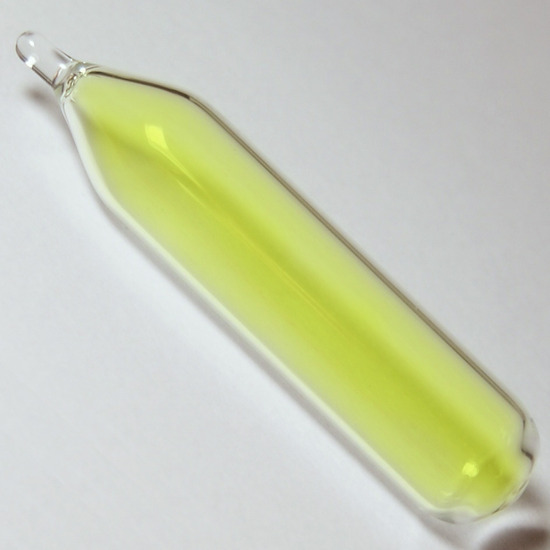


 علم الكيمياء
علم الكيمياء 
 الكيمياء التحليلية
الكيمياء التحليلية 
 الكيمياء الحياتية
الكيمياء الحياتية 
 الكيمياء العضوية
الكيمياء العضوية 
 الكيمياء الفيزيائية
الكيمياء الفيزيائية
 الكيمياء اللاعضوية
الكيمياء اللاعضوية 
 مواضيع اخرى في الكيمياء
مواضيع اخرى في الكيمياء
 الكيمياء الصناعية
الكيمياء الصناعية |
Read More
Date: 31-12-2018
Date: 9-1-2018
Date: 24-10-2018
|
In the late 1600's minerals which we now know contain fluorine were used in etching glass. The discovery of the element was prompted by the search for the chemical substance which was able to attack glass (it is HF, a weak acid). The early history of the isolation and work with fluorine and hydrogen fluoride is filled with accidents since both are extremely dangerous. Eventually, electrolysis of a mixture of KF and HF (carefully ensuring that the resulting hydrogen and fluorine would not come in contact) in a platinum apparatus yielded the element.

Fluorine was discovered in 1530 by Georgius Agricola. He originally found it in the compound Fluorspar, which was used to promote the fusion of metals. It was under this application until 1670, when Schwanhard discovered its usefulness in etching glass. Pure fluorine (from the Latin fluere, for "flow") was was not isolated until 1886 by Henri Moissan, burning and even killing many scientists along the way. It has many uses today, a particular one being used in the Manhattan project to help create the first nuclear bomb.



|
|
|
|
دخلت غرفة فنسيت ماذا تريد من داخلها.. خبير يفسر الحالة
|
|
|
|
|
|
|
ثورة طبية.. ابتكار أصغر جهاز لتنظيم ضربات القلب في العالم
|
|
|
|
|
|
|
المجمع العلمي ينظم مسابقة قمر بني هاشم (عليه السلام) القرآنية في قضاء الهندية
|
|
|